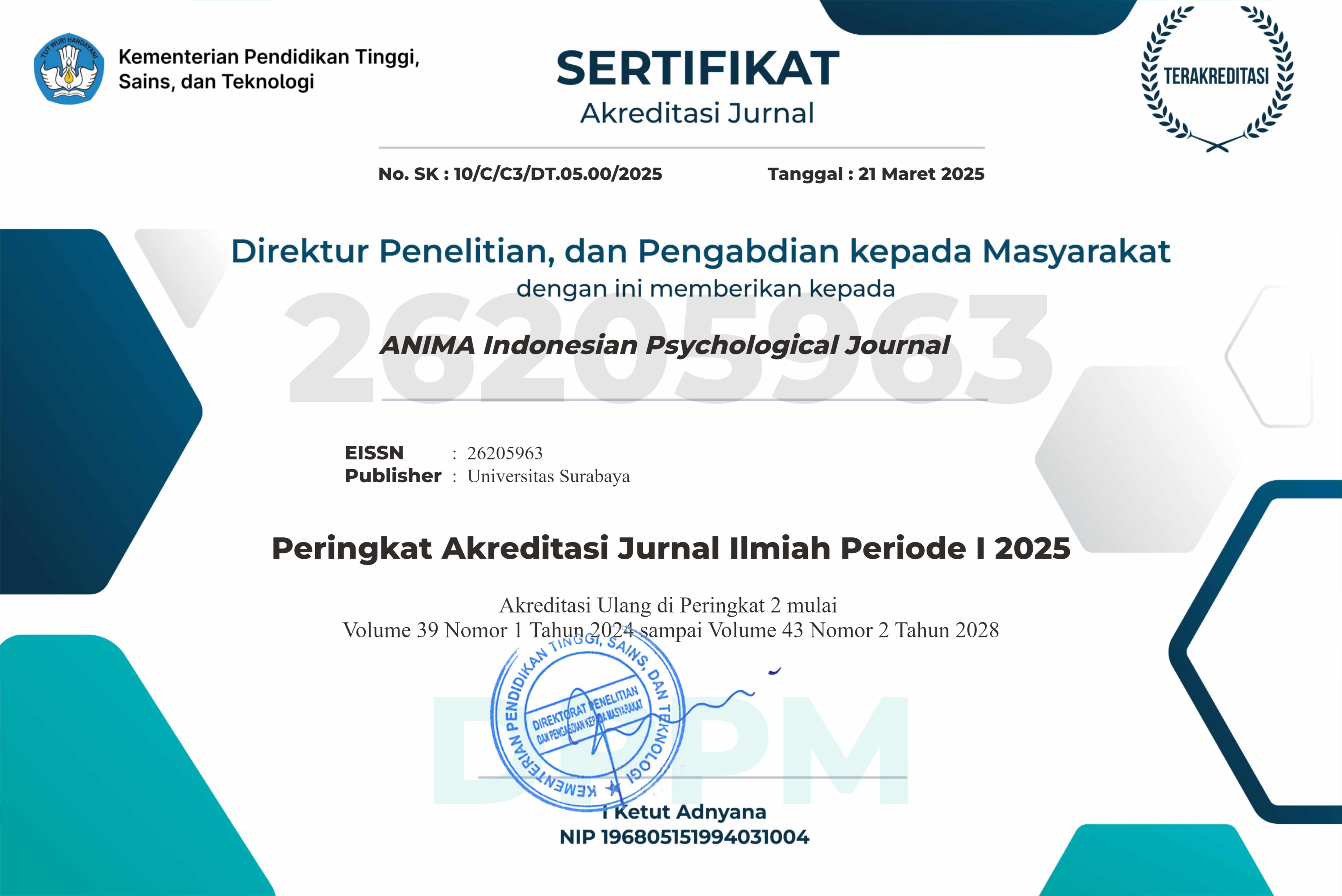The Importance of University Students’ Needs Identification to Support an Effective Communication Process in Teaching and Learning Activity
 Abstract Views:
117 times
Abstract Views:
117 times
 PDF-Full Text Downloads:
75 times
PDF-Full Text Downloads:
75 times
Abstract
Teaching is a form of effective communication between lecturer and his/her students allowing optimal transfer of learning. Failing to fulfill this would results in student passive or very submissive learning behavior. Effective instructional communication could be reached by identifying the students’ needs so lecturers can find the most appropriate teaching methods to fulfill the needs. Dominance, Influence, Steadiness, Conscientiousness/ Compliance (DISC) (Rosenberg & Silvert, 2013) inventory is a tool that can be used to identify the needs of the students. This preliminary study was keen to identify the needs of Telkom University Engineering Students from all majors in classroom communication. Results obtained through cross-tabulation analysis of DISC data from 6439 convenience samples (2009-2012 fresh students) reveal the basic academic needs: need to see how the content relates to their lives and pursue some interests of their own, and interpersonal/ instructional needs: inclusion and affection.
Kegiatan mengajar merupakan salah satu bentuk komunikasi efektif antara dosen dan mahasiswanya sehingga terjadi transfer of learning yang optimal. Jika kebutuhan ini tak terpenuhi maka yang terjadi antara lain adalah perilaku belajar yang pasif/sangat pasrah, kurang gairah mencari informasi lebih lanjut. Komunikasi yang efektif dapat dicapai melalui identifikasi kebutuhan mahasiswa dalam berkomunikasi dengan menggunakan Dominance, Influence, Steadiness, Conscientiousness/Compliance (DISC) (Rosenberg & Silvert, 2013) inventory Penelitian ini merupakan survei pendahuluan untuk mengidentifikasi kebutuhan mahasiswa baru Fakultas Teknik Universitas Telkom 2009-2012. Dengan teknik non- probability sampling terutama convenience samples, 6439 data DISC diolah menggunakan analisis tabulasi-silang. Hasil menunjukkan bahwa kebutuhan mahasiswa baru 2009-2012 yang harus dipenuhi yaitu kebutuhan akademik dasar: kebutuhan untuk mengetahui keterkaitan antara pengalaman mereka dan materi pelajaran yang dipelajari; adapun kebutuhan interpersonal atau instruksional yang harus dipenuhi adalah kebutuhan untuk menjadi bagian dari kelompok, serta kebutuhan untuk diterima lingkungan.
Downloads
References
Bee, S. B. (2012, February). The impact of teachers’ communication skills on teaching: Reflections of pre-service teachers on their communication strengths and weaknesses. Humanising Language Teaching, 2012, 14 (1). Retrieved from http://www.hltmag.co.uk/feb12/mart.htm
Beebe, S. A., & Mottet, T. P. (2009). Students and teachers, In W. F. Eadie (Ed.), 21st Century communication: A reference handbook (pp. 349-357).Thousand Oaks, CA: SAGE
Blignaut, P., & Naude, A. (2008). The influence of temperament style on a student’s choice of and performance in a computer programming course. Computers in Human Behavior, 24(3), 1010-1020
Coolican, H. (1994) Research methods and statistics in Psychology (2nd ed). London: Hodder & Stoughton Houghton Mifflin Harcourt.
Duck, J. (2006). Making the connection: Improving virtual team performance through behavioral assessment profiling and behavioral cues. Developments in Business Simulation and Experiential Learning. 33, 358-359
Glasser, W, (2005). William Glasser’s non coercive discipline. In C.M.Charles & G.W.Senter (Eds.), Building classroom discipline (8th ed). Boston, MA: Allyn & Bacon Inc.
Inscape Publishing. (1996). The personal profile system and models of personality research report. Item number O-232. Greenview, IL: Authors
Inscape Publishing. (2003). The DiSC® Indra® Research Report (online). Retrieved from: https://www.discprofile.com/what-is-disc/history-of-disc/
Inscape Publishing. (2007). Everything DISC application library: Research report. Greenview, IL: Authors
Marston, W. M. (1928). Emotions of normal people. London: Kegan Paul, Trench, Trubner & Co.Ltd
Morgan, A. L. (1989). Communication for teachers. Champaign, IL: ERIC Clearinghouse
Marczyk, G., DeMatteo, D., & Festinger, D. (2005). Essentials of research design and methodology. Hoboken, NJ: John Wiley and Sons
Nugaha, F.N. (2012). Training design to improve quality of response: Training to stimulate application of clarity standard on the elements of thinking. Anima Indonesian Psychological Journal, 27(3), 143-154.
Ngongko, T.M., & Agu, A.A. (1985). The impact of communication on the learning process: A study of secondary schools in Calabar municipality, cross river state of Nigeria. International Review of Education, 31(1): 205-221.
Paltiel, L. (1986). Self-appraisal personality inventories. The British Psychological Society 2(3), 3-6
Personality Insight. (2014). Education-related personality question and answer [online]. Retrieved from: http://personality-insights.com/q-a-gral.html#education.
Prozesky, D.R.(2000). Communication and effective teaching. Journal of Community Eye Health 13 (35), 44-45
Rubio, C.M. (2009). Effective teachers professional and personal skills. Revista de la Facultad de Educación de Albacete, 24, 35-46. [online]. Retrieved from dialnet.unirioja.es/descarga/articulo/3282843.pdf
Rosenberg, M., & Silvert, D. (2013). Taking flight: Master the DISC style to transfer your career, your relationship and your life. Upper Saddle River, NJ: Pearson Education Inc.
Schutz, W. (n.d). FIRO theory of needs [online]. Retrieved fromhttp://www.afirstlook.com/docs/firo.pdf
Singh, Y. K. (2006). Fundamental of research methodology & statistics. New Delhi: New Age
Sprague, J. (1993). Retrieving the research agenda for communication education: Asking the pedagogical questions that are embarrassments to theory. Communication Education 42, 106-122
Stangor, C. (2011). Research methods for the behavioral sciences (4th ed.). Belmont, CA: Wadsworth
Wrench, J.S., Richmond, V.P., Gorham, J., (2001). Communication, affect and learning in the classroom. Acton. Littleton, MA: Tapestry Press
Everything DiSC® Application Library Research Report © 2007-2009 by Inscape Publishing, Inc. All rights reserved. Copyright secured in the US and foreign countries. “DiSC,” “Everything DiSC,” “Inscape Publishing”
The American Heritage Dictionary of the English Language. Retrieved from http://www.ahdictionary.com/word/search.html?q=communication&submit.x=40&submit.y=25
The Discovery Institute. (2005). DiSCovery personality style analysis, QQ International Indonesia

This work is licensed under a Creative Commons Attribution-NonCommercial-ShareAlike 4.0 International License.
Articles published in ANIMA are licensed under a Creative Commons Attribution-NonCommercial-ShareAlike 4.0 International license. You are free to copy, transform, or redistribute articles for any lawful, non-commercial purpose in any medium, provided you give appropriate credit to ANIMA and the original Author(s), link to the license, indicate if changes were made, and redistribute any derivative work under the same license.
Copyright on articles is retained by the respective Author(s), without restrictions. A non-exclusive license is granted to ANIMA to publish the article and identify itself as its original publisher, along with the commercial right to include the article in a hardcopy issue for sale to libraries and individuals.
By publishing in ANIMA, Author(s) grant any third party the right to use their article to the extent provided by the Creative Commons Attribution-NonCommercial-ShareAlike 4.0 International license.




